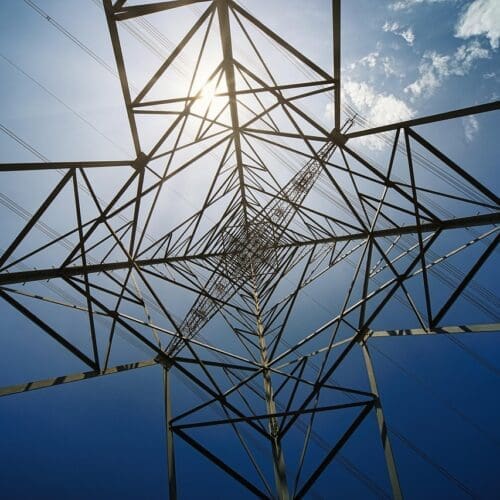TMO4+: The Impact of Grid Connection Reform on Demand Projects
October 2025In our previous article, we explored how Ofgem’s Targeted Market Option 4+ (TMO4+) reforms aim to reshape the UK’s grid connection landscape, particularly for supply-side projects like power generation and distribution. These reforms will also significantly affect demand-side projects such as data centres, industrial units, and large-scale housing developments.
TMO4+ is designed to accelerate the UK’s transition to net-zero by unlocking capacity in the grid connection queue. Historically, the electricity grid has operated on a “first come, first served” basis, treating projects equally regardless of their readiness, on both the supply- and the demand-side. This has allowed speculative or stalled projects to clog up the queue, delaying progress for viable developments. TMO4+ introduces a more dynamic “first ready, first needed, first connected” process. For a detailed breakdown of this change, see our initial article here.
Changes for demand-side projects
Under TMO4+, “transmission-connected” demand-side projects (projects that connect to the transmission system) fall under the same Gate 1 and Gate 2 regime as electricity generation projects. However, “distribution-connected” demand projects (projects that connect to the distribution network) currently fall outside the scope of grid connection reform.
Ofgem’s objective is to accelerate grid connections for large-scale demand side projects by removing bottlenecks, noting that demand projects or be subject to unnecessary transmission reinforcement requirements. The new process is expected to allow these projects to accelerate into capacity gaps created by the reforms. By enabling demand-side projects to connect in a timely manner, the TMO4+ reforms aim to improve certainty and investor confidence.
Key distinction: no need to demonstrate strategic alignment
In order to progress under the TMO4+ regime, projects need to meet two criteria:
- Readiness criteria
For most projects, this means obtaining, evidencing and maintaining exclusive land rights and being prepared to sufficiently progress planning status within a defined period.
- Necessary criteria
This is where demand-only projects diverge significantly from power generation projects. Demand-only projects are automatically deemed to be “needed”, and this criterion is deemed to be automatically met.
Provided that demand-only projects meet the readiness criteria, they will automatically meet the Gate 2 requirements. This might allow demand-only projects to access an earlier grid connection date than they would have received under the previous connections regime.
Key impacts for developers
- Protections for advanced projects
To minimise disruption, certain advanced projects (such as those with planning consent or existing contractual commitments) are granted protections permitting them to retain their connection dates under specific conditions. Projects with connection dates before the end of 2027 may qualify for these protections. This aims to provide developers with greater certainty around project timelines and viability.
- Accelerate connections for viable projects
Under the new TMO4+ model, well-prepared projects can advance more quickly.
Developers with robust, investment-ready proposals are less likely to be delayed by inactive or speculative projects, due to the new “first ready, first needed, first connected” method. Developers can gain a competitive edge in securing the readiness criteria and moving promptly through the Gateway 1 and Gateway 2 process.
- Enhanced transparency and clarity
The introduction of Gateway 1 and Gateway 2 offers developers a clear understanding of their project’s status and what is required to progress through the grid connection process. This enables developers to have greater confidence in their project planning and improves access to limited network capacity for deliverable projects.
- A more predictable investment environment
By establishing clear rules and eligibility criteria, TMO4+ has the potential to reduce uncertainty and delays. This can have a knock-on effect on investment, improving the bankability of advanced projects and making them more attractive to investors and financial institutions.
- Increased documentation and evidence requirements
Developers must provide more comprehensive evidence of project viability, including proof of land rights and planning consents. This raises administrative burdens and may have a detrimental impact for smaller developments.
- Higher upfront costs
The need to secure land and planning permissions earlier in the development cycle can increase pre-development risk and expenditure. This may price some developers out of the market, or delay projects that lack early-stage funding
- Delay risk
If projects cannot meet the “readiness” criteria, there is a risk that projects will be moved down the queue. This will likely have a knock-on effect for investors and their willingness to invest in demand projects and may, in extreme cases, lead to developments being cancelled.
- Value judgements
As projects automatically meet the “need criteria”, there is increased complexity around their allocated position in the connections queue. It is likely that numerous demand projects will meet the Gate 2 criteria at the same time. This may lead to value-based decisions about which project proceeds first, unless a firm commitment is made to a ‘first-come, first-served’ approach.
For example, if a large residential development meets the readiness criteria at the same time as a data centre, then there is the potential for a value judgement over which project is most ‘needed’. The basis for any such value-based decision is unclear and could present future legal challenge.
Conclusion
Developers must prioritise early-stage project readiness. This includes securing land rights, obtaining planning permissions, and compiling robust evidence for Gateway 1 and 2 submissions.
Maintaining clear, well-documented compliance records will be essential for securing and retaining a place in the grid connection queue. Developers should engage early on with ESO / NESO guidance to ensure that all parties understand and meet evolving requirements. In the event that projects are delayed, all parties should ensure that they exercise the appropriate contractual regimes, for example (in an NEC contract) issuing early warning notices and compensation event notices within the appropriate timescales.
Establishing project readiness will be essential for acquiring Gateway 2 approval. Without the requirement to demonstrate the “necessary” criteria, demand projects should be able to move quicker through the grid connection queue than under the previous regime.
If you require advice on TMO4+, or any advice on your energy infrastructure projects, please contact the Nadir Hasan, Charlie Bayliss and our Construction, Engineering and Infrastructure team.
Download PDF








